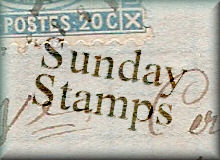Potsdam sounds like a wonderful place, described as a town of palaces, castles and parks, with a series of interconnecting lakes around the city. In the 17th and 18th Centuries it was the summer residence of Prusian kings and German emperors. It is my senders ex home town and she likes to send British postcrossers the ones with some English looking buildings. Spot which two they are.
You couldn't get more english than the top left Shloß Cecilienhof which was actually built to look like an English Tudor house and is based on a house I have actually seen, Bidston Court on the Wirral (a peninsular near Liverpool). Cecilienhof was the last palace built by the Hohenzollen family and Emperor Wilhelm II erected it for his son. Like many of the palaces in Postsdam it is part of the UNESCO world heritage site of palaces and parks.
The fairy tale house top right is the Teehaus, or Chinese Tea-house and was built for Frederick the Great in the 18th Century to adorn his flower and vegetable garden, it reflects the love of chinoiserie that swept Europe at that time. This building mixes oriental and rococo, I'd love to have a look inside.
Middle left:- Russische Kirche, the oldest Russian Orthodox church in western Europe, called the Alexander Nevsky Memorial Church.
Bottom left - Hollandisches Viertel, the Dutch Quarter is in the heart of Potsdam with many cafes, pubs, arts and crafts shops. 134 houses were build of red brick on 4 squares by Jan Bourman in the 18th Century.
Middle right - Schloß Babelsberg was built in 1835-1849 as the summer residence for Emperor William I in the English Gothic style. It is surrounded by beautiful gardens and is also part of the UNESCO site.
Bottom left - Brandenburger Tor, the gate commissioned by Frederich II in 1770, the side passages added later in 1843.
A marvellous mixture of styles and shapes in all the buildings and, as my sender says, the city has a quite an international face. The card, alongside the German definitive flower stamps had a nicely themed
October 2010 commemorative stamp of a 1582 town-house in Epingen located in the Baden-Wuerttemberg region.
Thank you Denise I can see why your heart still lives in beautiful Potsdam




















 I think this must be my favourite miniature sheet; it portrays scientific endeavour but in the stunning setting of the forests and lakes of Finland. I love all the activity going on, including sitting down. The sheet contains 2 se-tenant stamps with the marvellous Finnish philatelic imagination of one consisting of the large circle surrounding the map and the other the map itself. (the circle does not show up too well on this scan but you can see the two denominations) But back to the scene and the horizon curving in the distance which is appropriate for this is a commemoration of the measuring of the Struve Geodic Arc. An internationally organised meridian arc survey which influenced the future development of science and helped establish the precise shape and size of the Earth. The 2,822 kilometre arc stretches from the Arctic coast in Norway to the mouth of the River Danube at the Black Sea. The measurements were carried out from 1816-1855 under the leadership of the astronomer Friedrich Georg Wilhelm Struve from the Dorpat (Tartu) University in present day Estonia. Today the line passes through 10 countries (Norway, Sweden, Finland, Russia, Estonia, Latvia, Lithuania, Belarus, Moldova and Ukraine). Just imagine all that triangulation measurement, there were 258 main triangles with 265 main station points.
I think this must be my favourite miniature sheet; it portrays scientific endeavour but in the stunning setting of the forests and lakes of Finland. I love all the activity going on, including sitting down. The sheet contains 2 se-tenant stamps with the marvellous Finnish philatelic imagination of one consisting of the large circle surrounding the map and the other the map itself. (the circle does not show up too well on this scan but you can see the two denominations) But back to the scene and the horizon curving in the distance which is appropriate for this is a commemoration of the measuring of the Struve Geodic Arc. An internationally organised meridian arc survey which influenced the future development of science and helped establish the precise shape and size of the Earth. The 2,822 kilometre arc stretches from the Arctic coast in Norway to the mouth of the River Danube at the Black Sea. The measurements were carried out from 1816-1855 under the leadership of the astronomer Friedrich Georg Wilhelm Struve from the Dorpat (Tartu) University in present day Estonia. Today the line passes through 10 countries (Norway, Sweden, Finland, Russia, Estonia, Latvia, Lithuania, Belarus, Moldova and Ukraine). Just imagine all that triangulation measurement, there were 258 main triangles with 265 main station points.